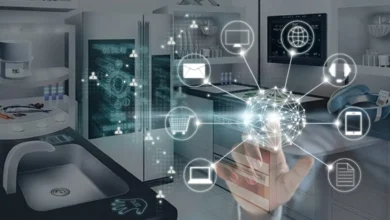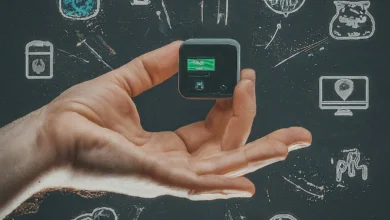How Can You Check Data on Devices Connected Through an IoT Network?

The Internet of Things (IoT) has transformed the way we live and work by connecting a vast range of devices and objects to the internet. From smart home appliances to wearables, connected vehicles, and industrial equipment, IoT adoption is growing rapidly. While this interconnection provides greater efficiency, control, and insights, effectively monitoring the sheer volume of data generated by IoT devices is critical.
In this comprehensive guide, we’ll explore the importance of IoT data monitoring and the various methods you can employ to check data on devices connected through an IoT network.
Why IoT Data Monitoring Matters
IoT data monitoring refers to the oversight of data generated by sensors, processors, and transmitters embedded in IoT endpoints. Monitoring this data is vital for:
- Security – Continuously monitoring data can help detect anomalous behaviors and cyber threats, enabling a prompt response.
- Performance Optimization – Data insights can pinpoint inefficiencies and optimization opportunities.
- Predictive Maintenance – Identifying device issues early prevents downtime and damage.
- Compliance – Certain industries have regulations regarding data monitoring and protection.
- Decision-Making – Analyzing data identifies patterns and trends that inform business decisions.
Methods for Monitoring Data on IoT Devices
Several techniques and tools are available to monitor the data from devices connected through an IoT network:
1. Device Management Platforms
Device Management Platforms (DMPs) like AWS IoT Core, Azure IoT Hub, and Google Cloud IoT Core provide a unified dashboard for monitoring, configuring, and managing all your connected devices. DMPs establish a two-way communication channel to keep track of device data in real-time.
2. Built-in Device Interfaces
Many IoT devices come with built-in web or mobile interfaces that allow you to directly review device data and diagnostics. This provides basic on-demand monitoring.
3. Network Traffic Analysis Tools
Tools like Wireshark let you inspect traffic on your IoT network to identify devices and monitor communications. This helps spot irregularities and security issues.
4. IoT Analytics Software
IoT analytics platforms integrate with your IoT infrastructure to analyze data and provide actionable insights. They leverage statistical models, machine learning, and AI.
5. Custom Scripts and Programs
For developers, custom scripts and programs can extract data from IoT devices and integrate it with monitoring systems. This requires IoT and coding expertise.
Best Practices for IoT Data Monitoring
Follow these best practices to enhance your overall IoT data monitoring:
- Use encryption – Encrypt IoT data to ensure secure transmission and storage. SSL/TLS and VPNs help.
- Enable remote monitoring – Centrally monitor IoT devices in real-time with remote tools. This allows quick response.
- Segment your network – Partition your IoT network into subnets. This contained approach improves security.
- Monitor continuously – Schedule periodic reviews and use automation to continuously gather and analyze data.
- Manage access – Leverage role-based access and two-factor authentication for accountability.
- Update firmware/software – Regularly update firmware and software to fix bugs and plug vulnerabilities.
- Use data analytics – Collecting data is useless without deriving insights from it. Visualizations also help.
- Watch for trends – Look for anomalies and trends in data that may indicate developing issues.
- Define alerts – Configure alerts to notify administrators automatically about critical events.
Emerging Trends in IoT Data Monitoring
Several innovations are poised to shape the future of monitoring data from IoT networks:
Edge Computing
Processing data at the edge, closer to IoT devices, will reduce latency allowing real-time monitoring and quicker response.
5G Connectivity
5G networks provide the speed, bandwidth, and low latency needed to support massive IoT data flows.
AI and Machine Learning
AI will help uncover insights from data and enable predictive capabilities based on data patterns.
Enhanced Security
Blockchain, biometrics, trusted execution environments (TEEs), and hardware security modules (HSMs) will secure data monitoring.
Smart Contracts
Smart contracts facilitate trusted data exchange between IoT devices without intermediaries.
Frequently Asked Questions About Monitoring IoT Data
How do I choose an IoT data monitoring solution?
Consider factors like scale, network complexity, cost, ease of use, analytics capabilities, and supported devices/protocols. Your current tech stack will also influence tool selection.
What common IoT protocols enable data monitoring?
Protocols like MQTT, CoAP, AMQP, DDS, and XMPP allow remote monitoring of IoT devices. Choose based on architecture, speed, security needs, etc.
How can I detect unauthorized IoT devices on my network?
Network scanning tools can fingerprint devices and detect unknown/unauthorized ones. Also monitor traffic for unexpected IP addresses or activity spikes.
What are some open source tools for monitoring IoT data?
Open source options include Prometheus, Grafana, nodered, Zabbix, and Nagios. These provide capabilities like visualization, automation, and alerting.
How do I ensure secure remote access for monitoring IoT devices?
Mandate user authentication via passwords/tokens. Also implement secure protocols like SSH or HTTPS for remote device access. Use VPNs and limit access to management interfaces.
Conclusion
Effective monitoring of the ever-increasing amount of data from IoT devices allows organizations to optimize performance, identify issues rapidly, and make intelligent decisions. Following best practices and leveraging the various tools and emerging technologies available will enable you to unlock maximum value from your connected IoT infrastructure. Focusing on security and real-time data insights is key.





